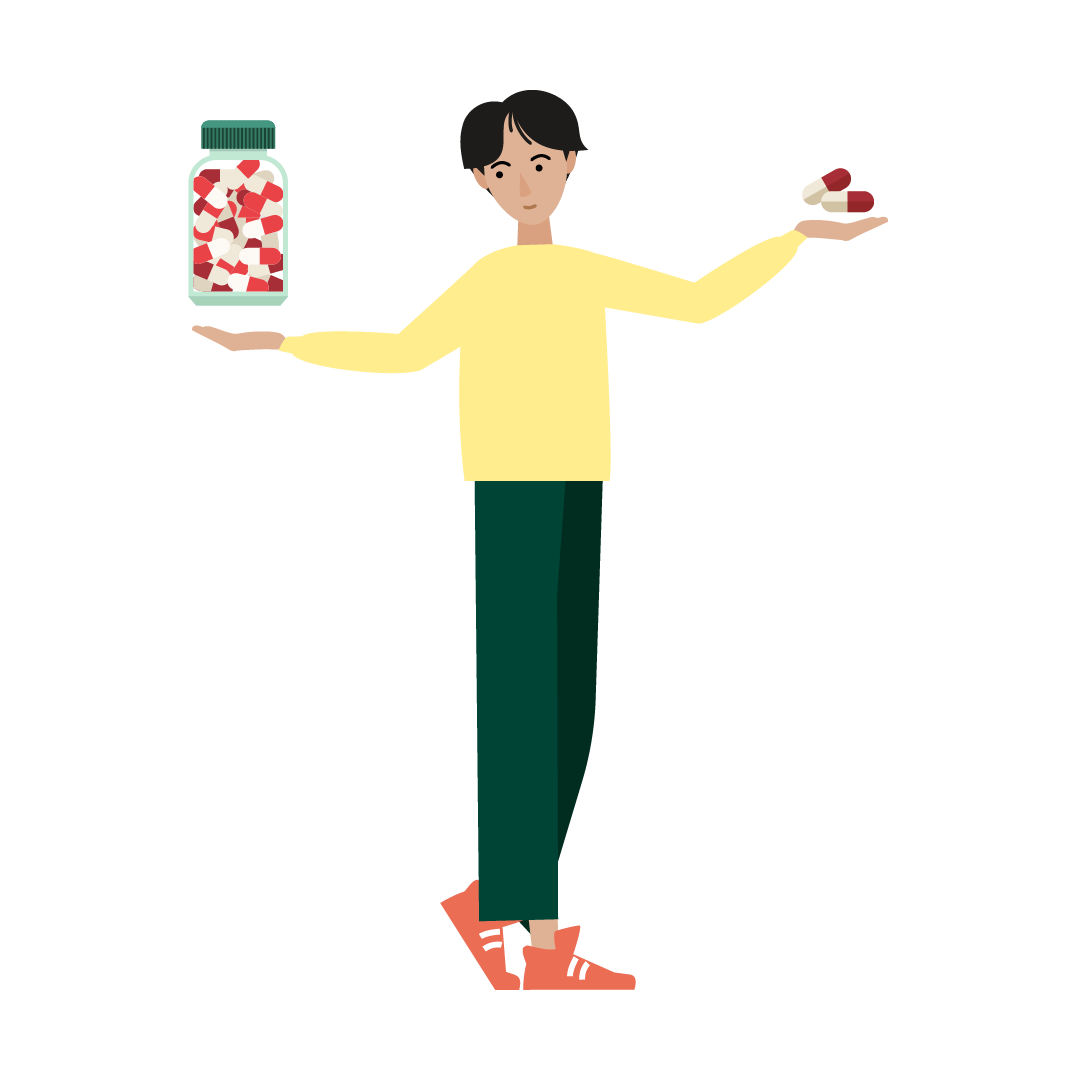
for medicines
Medicines: Costs covered
Antibiotics, painkillers and cough syrup: Basic insurance covers the cost of many medicines, but not all.

Cost share for medicines
A medicine must fulfil certain requirements in order to be covered by basic and supplementary insurance.
-
What costs are covered under basic insurance?
For basic insurance to cover the costs of a medicine, it must be prescribed by a doctor. In addition, the medicine must
- either be included in the specialities list (SL) and used in accordance with the provisions, or
- be manufactured according to a prescribed recipe in accordance with the Medicines List with Tariff.
You pay a share of the costs for medicines through your deductible and copayment. The copayment for original drugs is usually 40%, for generics usually 10%.
-
What costs are covered by supplementary insurance?
Our supplementary insurance plans cover additional costs for medically prescribed medicines that are not covered by basic insurance:
- Vital Basic, Vital Smart, Vital Premium: 90% of the costs of uninsured drugs
- Jump, Classic, Family*: 90% of the costs of uninsured drugs
* The Jump, Classic and Family supplementary insurance plans can no longer be taken out. Existing customers continue to enjoy the usual benefits.
Conditions for cost coverage:
- The medicine must be registered with Swissmedic for the treatment of the disease.
- The medicine must not be on the List of uninsured drugs and products.
- Supplementary insurance covers other alternative medical remedies. For this purpose, a doctor or a natural health practitioner recognised by Sanitas must dispense or prescribe the remedies.
-
Save money with generics
Generics: 10% copayment
Exception: You pay a copayment of 40% for a generic if the ex-factory price exceeds a certain limit. The doctor or pharmacist will inform the insured person if a medicine has an increased copayment.
Original drugs: 40% copayment
Exception: You only pay a copayment of 10% for original drugs if
- no generic drug is available,
- the original drug cannot be replaced by a generic for medical reasons, or
- the price difference between the original and the generic is less than 20%.
Why do generics cost less?
As soon as a particular medication’s patent protection has expired, it may be copied. As a result, the development costs and therefore the price of generics are lower.
Is a low-cost generic available for my medicine?
